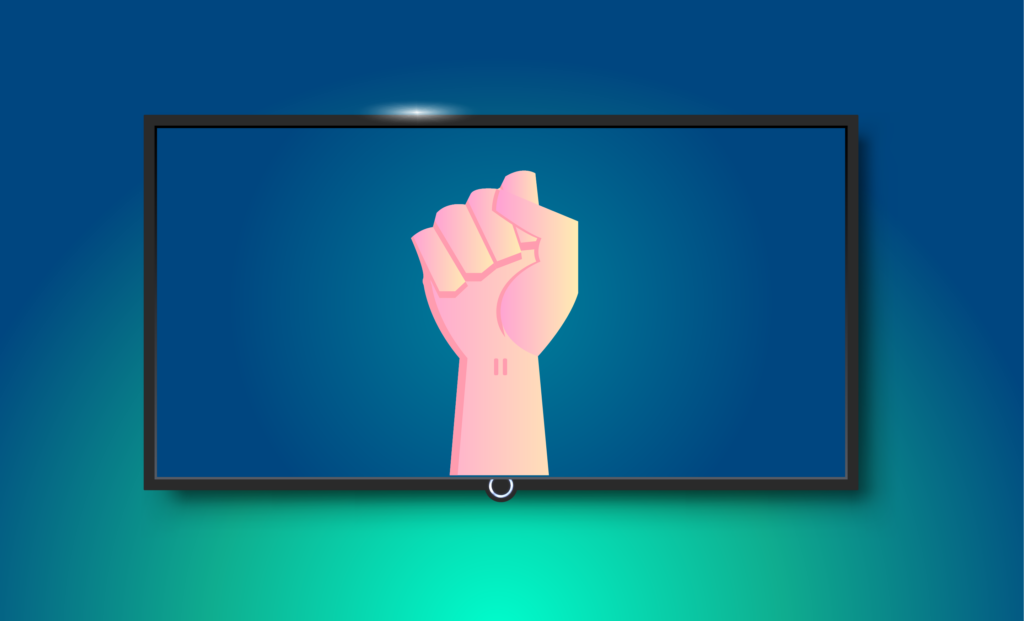In a world that is constantly evolving, the television landscape is no exception. Consequently, the digital revolution has brought significant changes. We have moved from the traditional TV model, focused on linear broadcasting, to more flexible formats. These include Video on Demand (VOD). This transition is a technological advance. However, it also impacts consumption habits.
We are interested in how these changes shape viewer preferences and practices. These changes influence how they interact with television content in the digital age.

The Resilience of Traditional TV Against VOD
According to The Media Leader, television has been through a veritable onslaught of imminent predictions of death and decline, but it remains unshaken in the corner of 95% of British living rooms. Traditional TV remained a significant source of information and entertainment for many households.
Despite predictions of decline, traditional TV remains robust. For example, consider the 2024 Super Bowl. It marked a milestone in US television ratings. The event attracted a combined audience of 123.4 million across streaming platforms and TV channels. This figure surpassed the previous record of 115.1 million. Nielsen highlighted this notable 7% increase.
The Rise of VOD
What Exactly is VOD?
In today’s media universe, the term VOD encompasses a wide range of services allowing users to watch video content according to their preferences, without adhering to the fixed broadcasting schedules of traditional television. This flexibility is made possible by various online services such as streaming platforms, on-demand video applications, and even social networks.
We can distinguish:
- SVOD (Subscription Video On Demand): This model, represented by platforms like Netflix, Amazon Prime Video, and Disney+, operates on a monthly or annual subscription system, offering unlimited access to a content catalog without additional advertisements, except for certain subscription
- AVOD (Advertising-based Video On Demand): Here, content is free for viewers but includes advertisements. Examples include YouTube or certain offerings from platforms like Peacock.
- Replay (or Catch-Up TV): This service allows viewers to rewatch shows recently broadcast on traditional channels, often via the channel’s website or app, for a limited period after their original airing.
According to Netflix, Amazon Prime Video, and Disney+ are the dominant services in the global SVOD market. Netflix has particularly high viewership hours across most surveyed markets, except in India where Disney+ Hotstar matches its popularity. In the US and India, SVOD viewing accounts for about 18% of total TV/video viewing hours, while in the UK, it represents 21%. In Western European markets, these three services constitute more than 80% of daily SVOD viewing hours.

The Era of SMART TVs
Globally, the adoption of this growth in Smart TV ownership is a reflection of the increasing popularity and availability of streaming services and the demand for connected home entertainment options. In addition to being highly appreciated, all these video services are easily accessible on TVs via so-called Over The Top (OTT) applications. But that’s not all… Nowadays, TV usage has digitized, and content is viewable at any time, anywhere, on all screens, whether it’s TVs, smartphones, computers, or tablets. Watching TV on mobile is not complicated; on the contrary… operators offer numerous applications to provide direct access to TV channels. And the technology does not stop there; watching the 8 pm news or midday telefilms during lunch break has become possible from anywhere, thanks to the development of communication networks.
5G and 4G: The New Drivers of Video Streaming
By 2022, it is estimated that 82% of global internet traffic will come from video streaming and downloads. This remarkable proportion shows the significant increase in the popularity of online video and reflects the ongoing transition to more digital forms of content consumption. This trend is supported by the development and improvement of network technologies, such as the roll-out of 5G and the consolidation of 4G, which facilitate faster and more reliable access to streaming content.
The Future of TV Measurement: All Screens Count!
This change aligns with the global trend of increasing internet-connected device usage for TV viewing. According to a 2022 report by Digital TV Research, the number of SVOD subscriptions worldwide was expected to reach 1.64 billion by 2026. This projection highlights the growing importance of accounting for diverse viewing platforms in audience measurements.
Connected devices offer advertisers an effective way to distribute their advertisements, to reach and influence individuals to use their services or products. Indeed, with the rise of SVOD and AVOD, the video sector is expected to reach 2 billion OTT subscription users by 2024, according to eMarketer.
This is a communication opportunity not to be missed! As an advertiser, positioning oneself in the Video on Demand environment can have a stronger impact on the target audience.
To support you, Admo.tv has launched this year its VOD campaign measurement solution, called Adconnect. This will allow you to understand the impact of your VOD campaigns and their complementarity with your traditional TV campaigns.
And, if you are interested in this subject and want to continue understanding this advertising universe, we invite you to read this article: Connected TV Redefines the Advertising Landscape and Transforms the Television Market.
For more information, contact us via this form.




